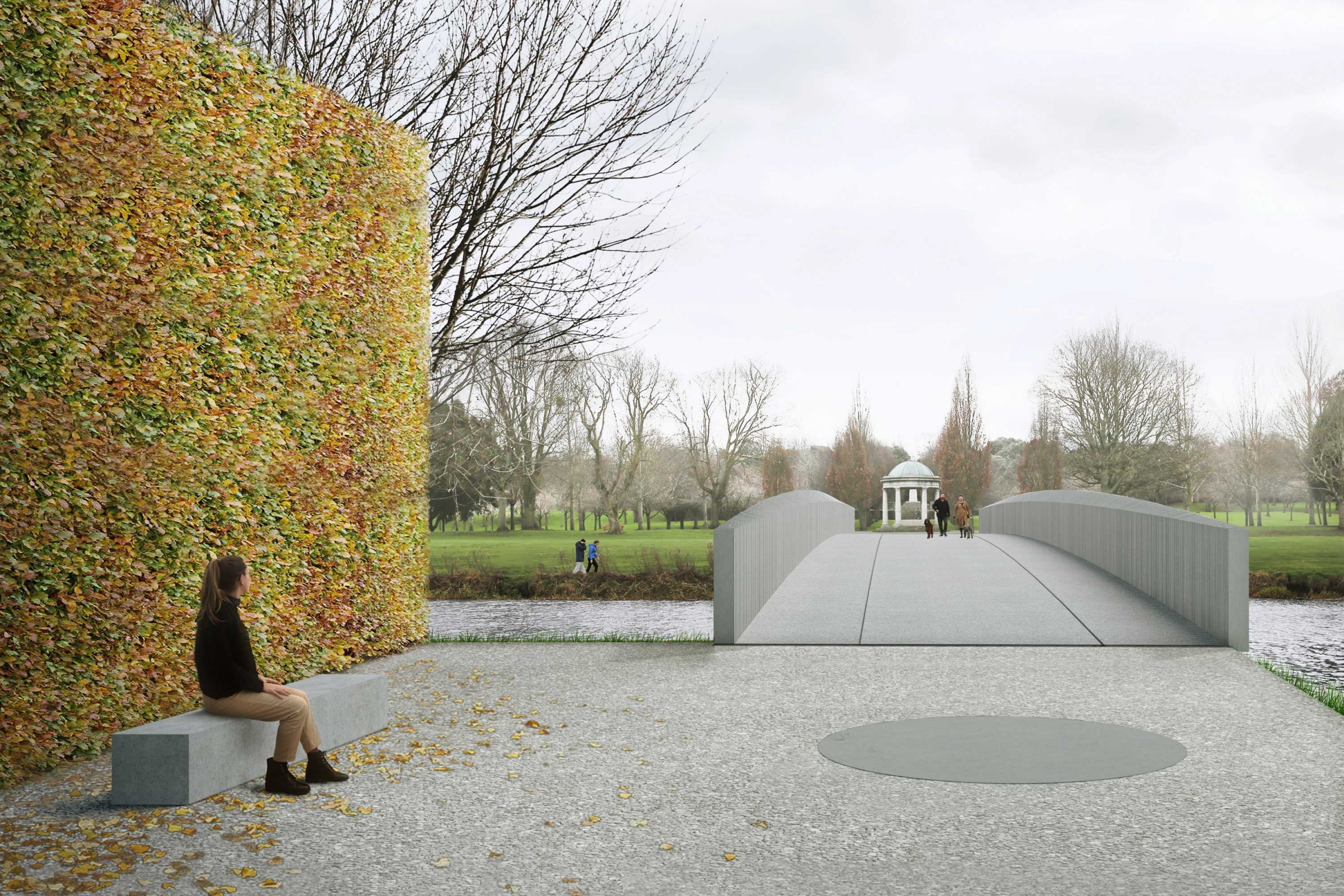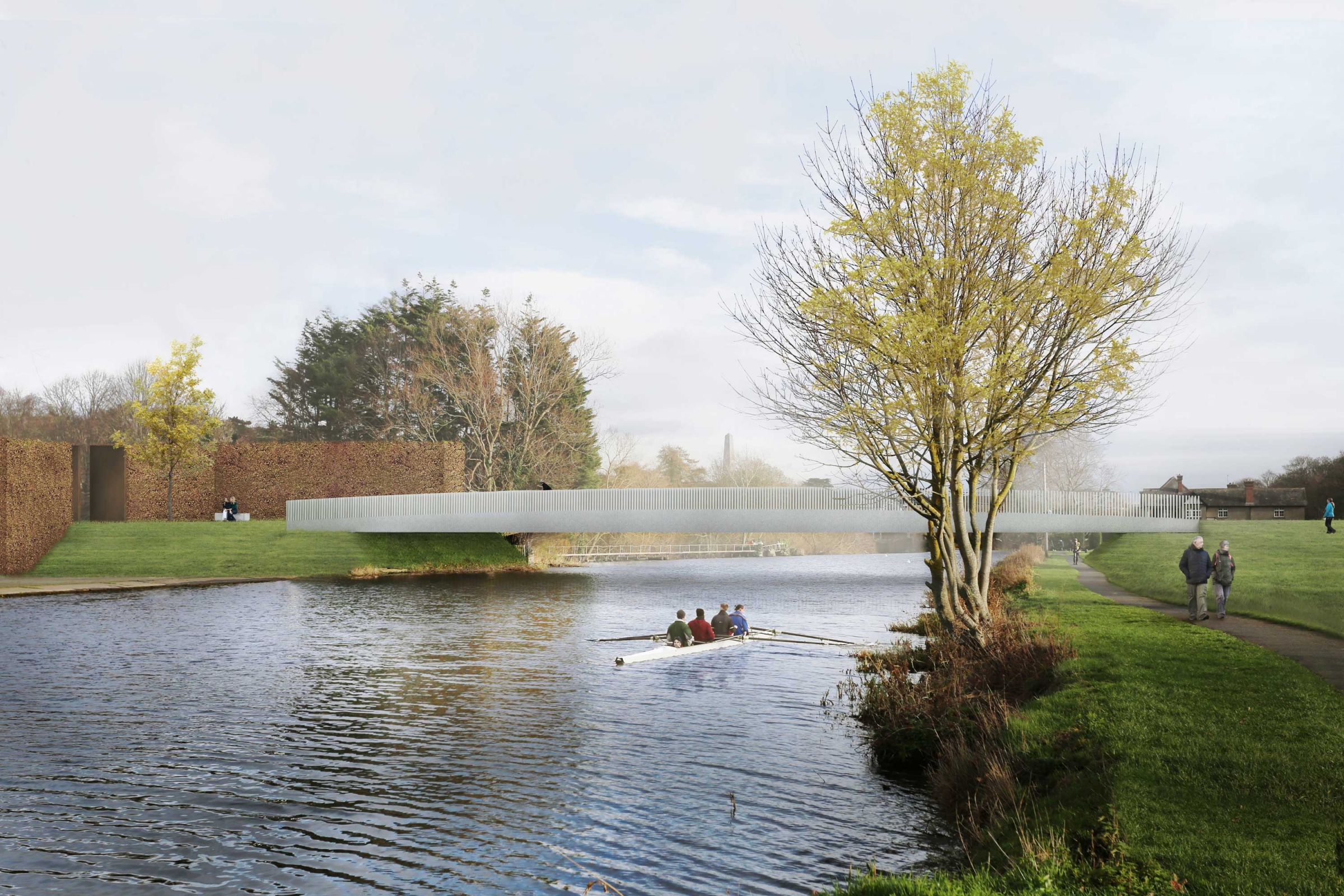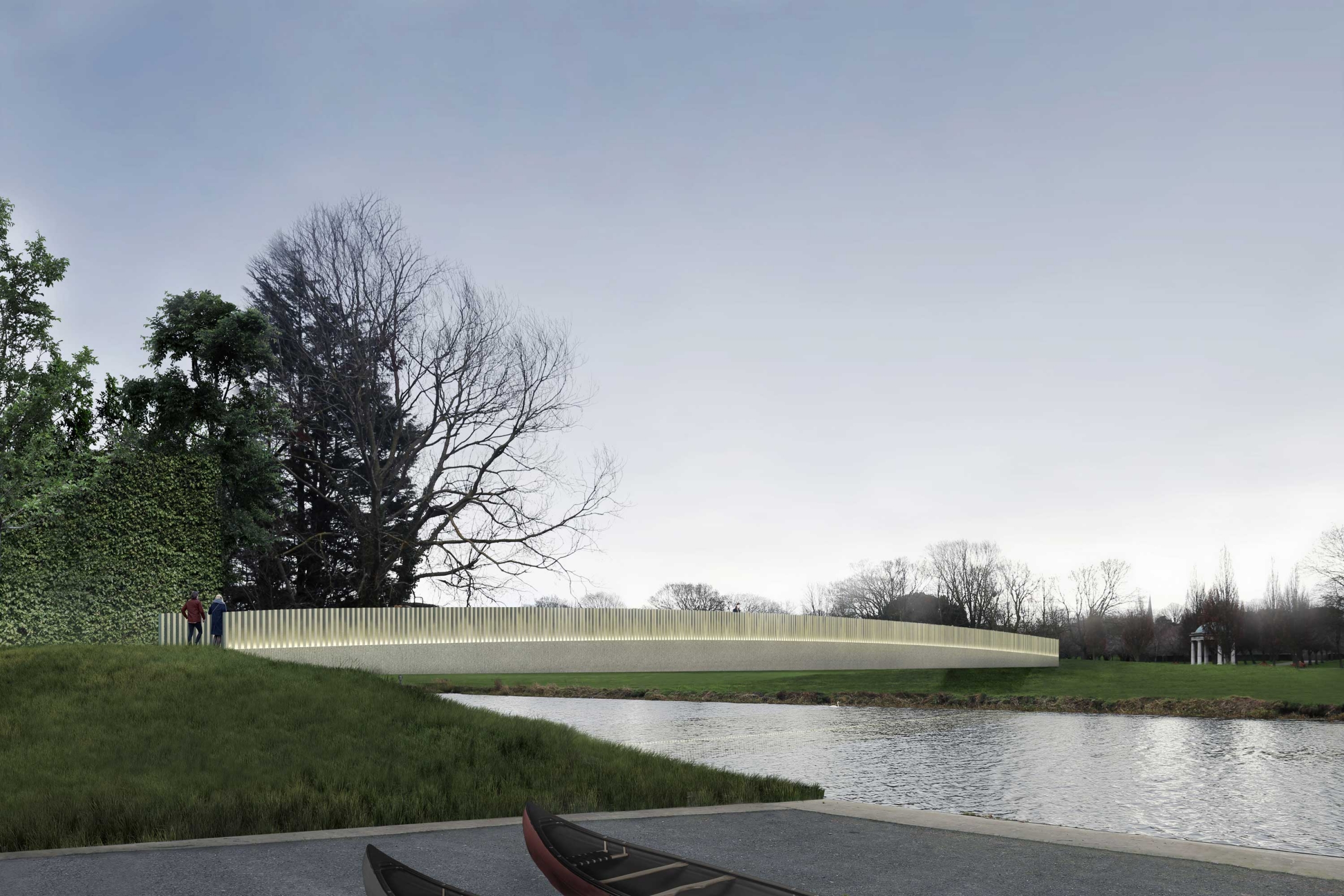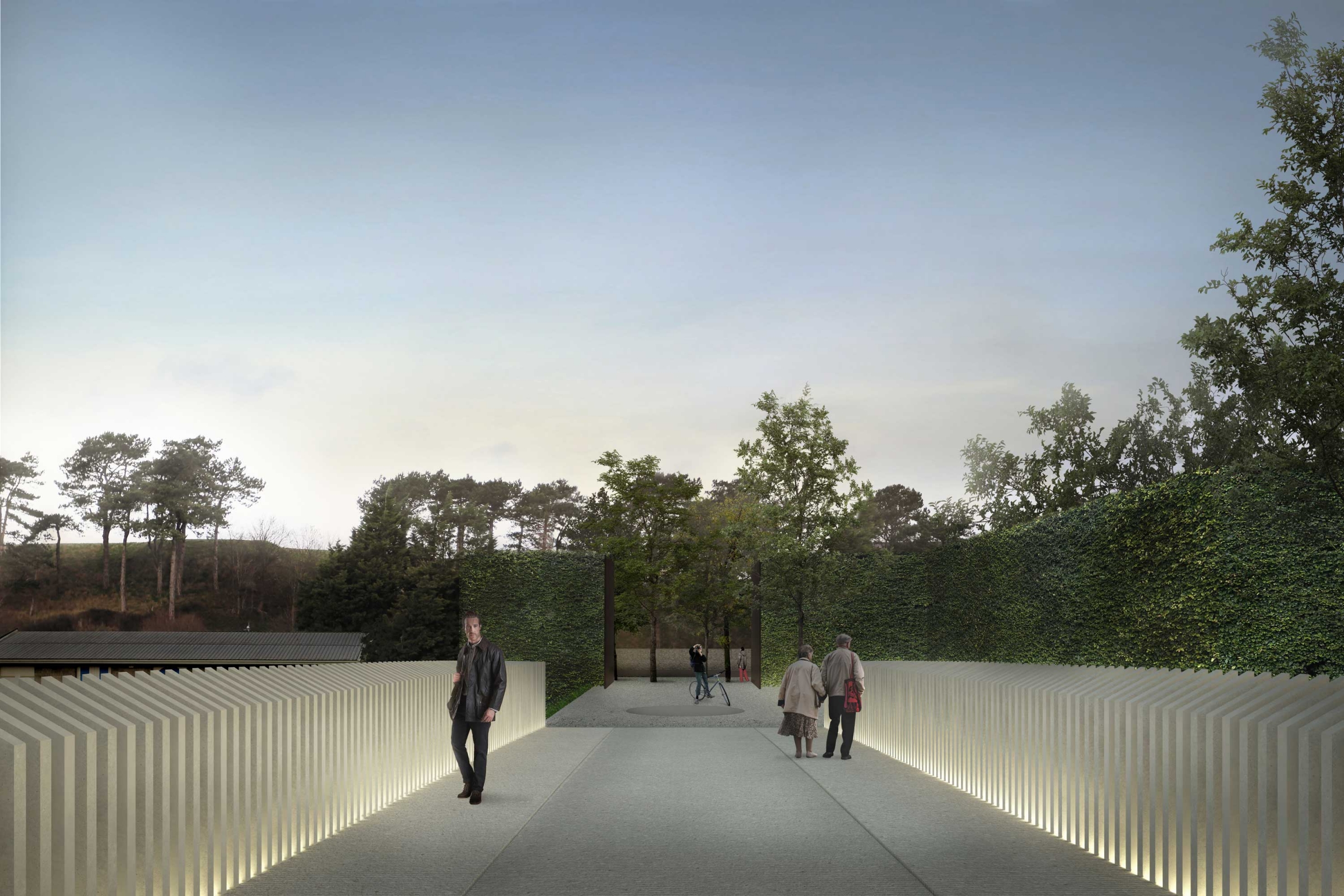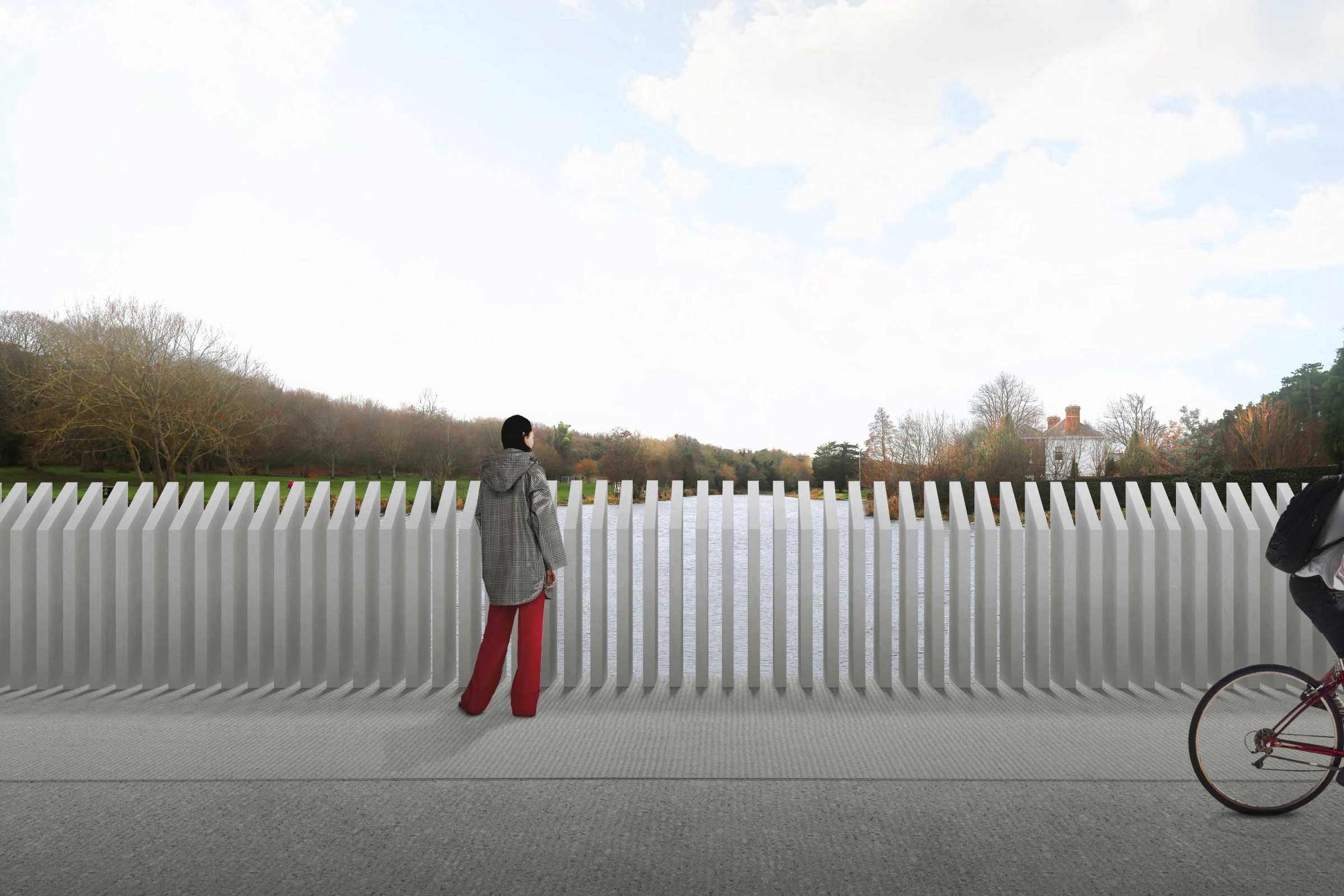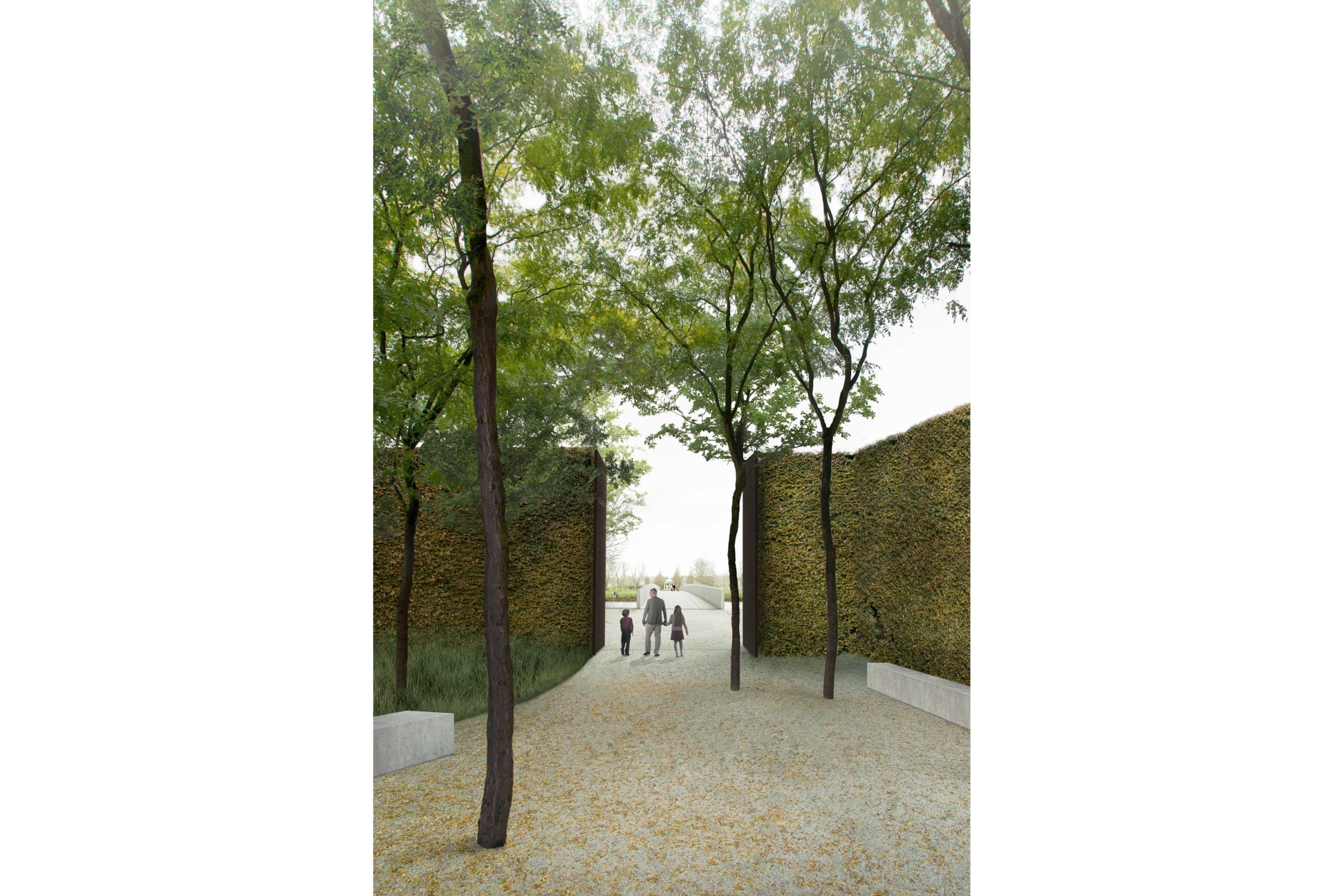Commemorative Bridge
River Liffey, Dublin
2019
A vehicle drop-off zone gently curves its way towards a field of trees and wildflower borders. Visitors soon find themselves roaming through a grove of locust honey trees that informally penetrate the dusty-red bonded gravel path. Their slender trunks rise up tall with light canopies of foliage sheltering the visitor below.
Monolithic benches of Irish granite nestle along wildflower borders of bluebells, ferns, corn-cockle, hedge garlic and knapweed providing opportunities for reflection, rest and gathering. Within the Grove, the visibility onto the bridge is partly obscured by this natural setting. The focus remains on one’s relationship with nature.
The visitor soon arrives at set of tall bronze gates set within two 6-meter-high beech borders.
In contrast to the sheltered Grove, the Plaza is an open platform of bonded gravel placed asym-metrically to the alignment of the bridge forming a terrace where panoramic views onto the River Liffey, the Commemorative Bridge and the War Memorial Gardens can be most enjoyed.
Beech hedges 6m in heights define the limits of the Grove and Plaza and frame the views to-wards the bridge and beyond.
Grassy banks slope gently downwards towards the river and the Boathouse forecourt.
A commemorative plaque with bronze lettering is set flush within the ground acknowledging the significance of the War Memorial Garden ahead and the new link to it. It’s round form reflecting the circular shapes evident throughout the garden.
The Commemorative Bridge is minimal and pure in form stretching out elegantly over the River Liffey laying down softly on-top of gently slopped grassy banks that conceal the bridge’s foundations. This gives the impression that the bridge is literally resting on grass.
Slender pre-cast white concrete fins define the sides of the bridge. The regulatory gaps between each fin provides the bridge with a transparent and ethereal quality not often associated with concrete structures. This lightness can be appreciated from all positions on the bridge but also when viewing the bridge from afar.
A reductionist approach towards materials ensures a lighter and quieter imposition within the landscape. Pre-cast white cement-based concrete with a fine white ag-gregate is the material of choice for all of the bridge’s architectural elements. On closer inspection a subtle manipulation of the finish helps to define the different ele-ments from each other while defining the functionality of the bridge. However, from further away, the bridge’s material and finish appear constant.
The bridge’s lighter concrete tones reflect the tonal qualities of the War Memorial Garden structures beyond.
The profile of the fins gradually alters in two directions across the span of the bridge resulting in a fluid wave-like appearance that softens the edge condition while echoing the continuous flow of water below.
Recessed LED lighting is positioning between the fins further enhancing the bridge’s delicate and translucent form from dusk through till night.
Textural treatment along of the bridge’s pre-cast concrete floor helps to subtly de-fine the perimeter walkways from that of the central cycling zone. The separation between these zones is further demarked by a marginally raised walkway with thin drainage slots running the length of the bridge.
Landscape Designer: Todd Longstaffe-Gowan
Structural Engineer: Constant Structural Design
Cost Consultants: Currie & Brown
Image Credits: Alex Cochrane Architects
